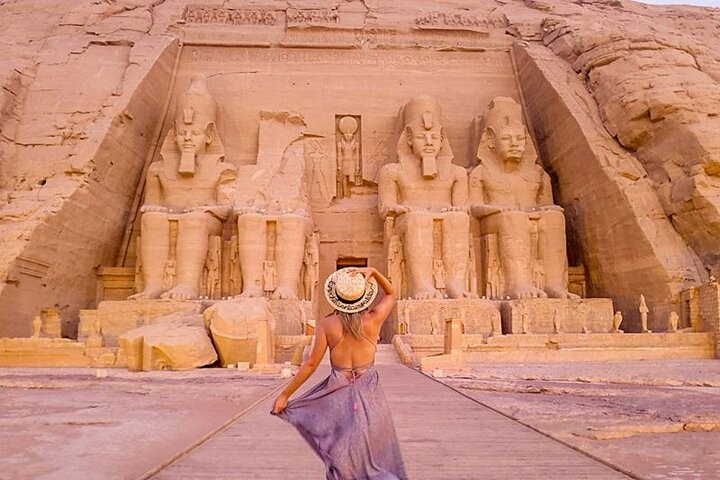Sailing Through Time: A Spiritual Odyssey on the Nile
Embarking on a luxurious Nile cruise from Aswan to Luxor, I sought to explore the spiritual and historical depths of Egypt’s ancient wonders. Join me as I recount my journey through the majestic temples and sacred sites that connect us to the past.
A Journey Through Time: The Temples of Abu Simbel
As the sun began to rise over the horizon, casting a golden hue across the Nile, I found myself embarking on a journey that promised not only luxury but a deep connection to the ancient world. The Nile Cruise from Aswan to Luxor was more than just a cruise; it was a pilgrimage through time, a chance to walk in the footsteps of pharaohs and feel the pulse of history beneath my feet.
Our first stop was the awe-inspiring Abu Simbel Temple Complex. As we approached, the colossal statues of Ramses II loomed large, their faces etched with the wisdom and power of a bygone era. The air was thick with reverence as our guide recounted the tale of these magnificent structures, relocated stone by stone to save them from the rising waters of the Nile. It was a testament to human ingenuity and the enduring legacy of Ramses the Great.
Inside, the temple walls were adorned with intricate carvings and hieroglyphs, each telling a story of gods and kings, of battles won and lost. As I stood in the holy sanctum, where twice a year the sun illuminates the statues of Ptah, Amun, Ta, and Ramses, I felt a profound connection to the divine. It was a moment of spiritual awakening, a reminder of the eternal dance between light and shadow, life and death.
The Duality of Kom Ombo
Leaving Abu Simbel behind, we sailed towards the Temple of Kom Ombo, a unique structure dedicated to two gods: Sobek, the crocodile god, and Horus, the falcon-headed god. This duality was reflected in the temple’s symmetrical design, a rare feature in ancient Egyptian architecture.
As I wandered through the twin halls and sanctuaries, I was struck by the harmony of opposites, the balance of power and protection. The reliefs on the walls depicted scenes of daily life, of offerings made to the gods, and of the eternal struggle between good and evil. It was a reminder that life is a delicate balance, a dance between opposing forces.
The temple’s location on the banks of the Nile added to its mystique, the river’s gentle flow a constant reminder of the passage of time. As I stood on the temple’s steps, gazing out at the water, I felt a sense of peace, a connection to the ancient rhythms of the earth.
The Majesty of Luxor
Our journey culminated in Luxor, a city that stands as a testament to the grandeur of ancient Egypt. The Temple of Karnak, with its towering columns and intricate carvings, was a sight to behold. As I walked through the Hypostyle Hall, I was enveloped by the sheer scale of the place, the weight of history pressing down upon me.
The Luxor Temple, with its grand avenue of sphinxes and colossal statues of Ramses II, was equally impressive. Here, the past and present seemed to merge, the ancient stones whispering stories of gods and pharaohs, of rituals and ceremonies.
But it was the Valley of the Kings that truly captured my imagination. As I descended into the tombs, the air cool and still, I felt as though I was entering another world, a realm of shadows and secrets. The walls were alive with vibrant paintings, each depicting the journey to the afterlife, a testament to the ancient Egyptians’ belief in the eternal soul.
This journey from Aswan to Luxor was more than just a cruise; it was a pilgrimage, a chance to connect with the past and find meaning in the present. It was a reminder that we are all part of a larger story, a tapestry woven through time, and that the journey is as important as the destination.

















































